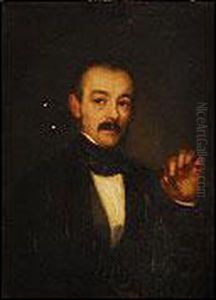Pierre Toussaint F. Mialhe Paintings
Pierre Toussaint Frédéric Mialhe, also known simply as Frédéric Mialhe, was a French painter and lithographer born in 1810 in Bordeaux, France, and died in 1881. Mialhe's work is particularly significant for its documentation of Cuban society, landscapes, and urban scenes during the 19th century. After moving to Cuba around 1838, Mialhe became one of the most influential and prolific artists on the island, capturing the essence of Cuban life during a period of significant change and the height of the sugar plantation economy.
Mialhe's artistic journey began in France, where he received his formal training in art. His move to Cuba marked the beginning of an extensive career that would see him not only as a painter but also as a master lithographer. In Cuba, his work quickly gained recognition for its detailed and picturesque portrayal of the island's landscapes, people, and customs. Mialhe's lithographs, many of which were published in albums such as 'Vista de la Isla de Cuba' and 'La Isla de Cuba Pintoresca,' became invaluable records of Cuban life and architecture in the pre-photographic era. These works were widely circulated, contributing significantly to European perceptions of the Caribbean and Latin America during the mid-19th century.
Beyond his landscapes and urban scenes, Mialhe also depicted the various social classes and races in Cuba, offering insight into the complexities of Cuban society under Spanish colonial rule. His work provides a nuanced view of the era's social and economic dynamics, including the realities of slavery and the sugar industry. Mialhe's influence extended beyond his art; he was involved in the cultural and intellectual life of Havana, contributing to the development of lithography in Cuba and mentoring future generations of Cuban artists.
Despite the importance of his work, Mialhe's contributions were somewhat overlooked after his death in 1881. However, recent scholarship has reevaluated his role in the history of Cuban art, recognizing him as a key figure in the visual documentation of 19th-century Cuba. His artworks are now celebrated for their historical value and artistic merit, offering a window into a pivotal period in Cuban history. Mialhe's legacy is preserved in collections and museums in Cuba, France, and around the world, where his works continue to be studied and admired for their beauty and historical significance.





